Blackmagic cinema camera for wildlife films
[Disclaimer:
This article is based on my own views, tests, personal opinions and thoughts.
Don’t decided on buying a camera only because you read this article. Do your own research, try one out and decide by yourself which camera’s the right one for you.]
A couple of years ago I wrote an article for Animalcity.eu community website called wildlife step by step. I wrote about what you might need for starting making wildlife videos and keeping the costs as low as possible. The camera I recommended at that time was the Canon 600D / T3i and the requirements for the camera was:
– Full HD recording
– Full manual controls (apperture, shutterspeed, whitebalance, ISO and focus)
– Interchangeable lenses
– Decent image quality
– Sound recording (doesn’t need to be good, the idea was to use it for sync only)
The reason I recommended the Canon 600D was that it was the cheapest camera with interchangeable lenses and the image quality was quite good compared to other more expensive dslr cameras on the market.
This has of course changed since then. And that’s why I’m writing a new, similar and more updated one here instead.
The good thing with the Canon dslr:s is that there’s a huge variety of lenses and lens manufacturers and these lenses are made for those cameras. But.
They are made for stills photography, not for filming. except for some very few. Like the Samyang / Rokinon Vdslr lenses. The optical quality is good, but not great and they are primes, which would not fit wildlife films very well, maybe for some macro shooting and landscapes.

So how do you know if a lens is for moviemaking or for stills photography?
– Aperture is stepless and usually on the lens barrel
– The zoom is par focal (Doesn’t shift focus when you zoom)
– The focus, zoom and aperture often has bigger barrels for easier handling
– The one and same F stop through the whole zoom range
– Good build quality, often iron and weights a lot.
– The mount of the lens is seldom a stills camera mount, more likely a PL or B4
– These lenses seldom covers a traditional full frame like the stills camera lenses. Cinema lenses were, and are still made for film cameras like 8mm, super 16mm or super 35mm and so on which are all smaller than the analog stills 35mm or digital full frame sensor.
There are as well video lenses that have the same kind of “philosophy” as the cinema lenses but usually covers a lot smaller sensor, like 2/3″ or 1/3″. They are known for their light sensitiveness and huge zoom ranges, up to even 40x. They are usually a bit lighter than the cinema lenses and are made of more plasticky materials. You can often spot these lenses on broadcast / news cameras.
As the Header says I’m going to talk about why I think the blackmagic cinema camera is good for wildlife films and what you would need to start shooting.
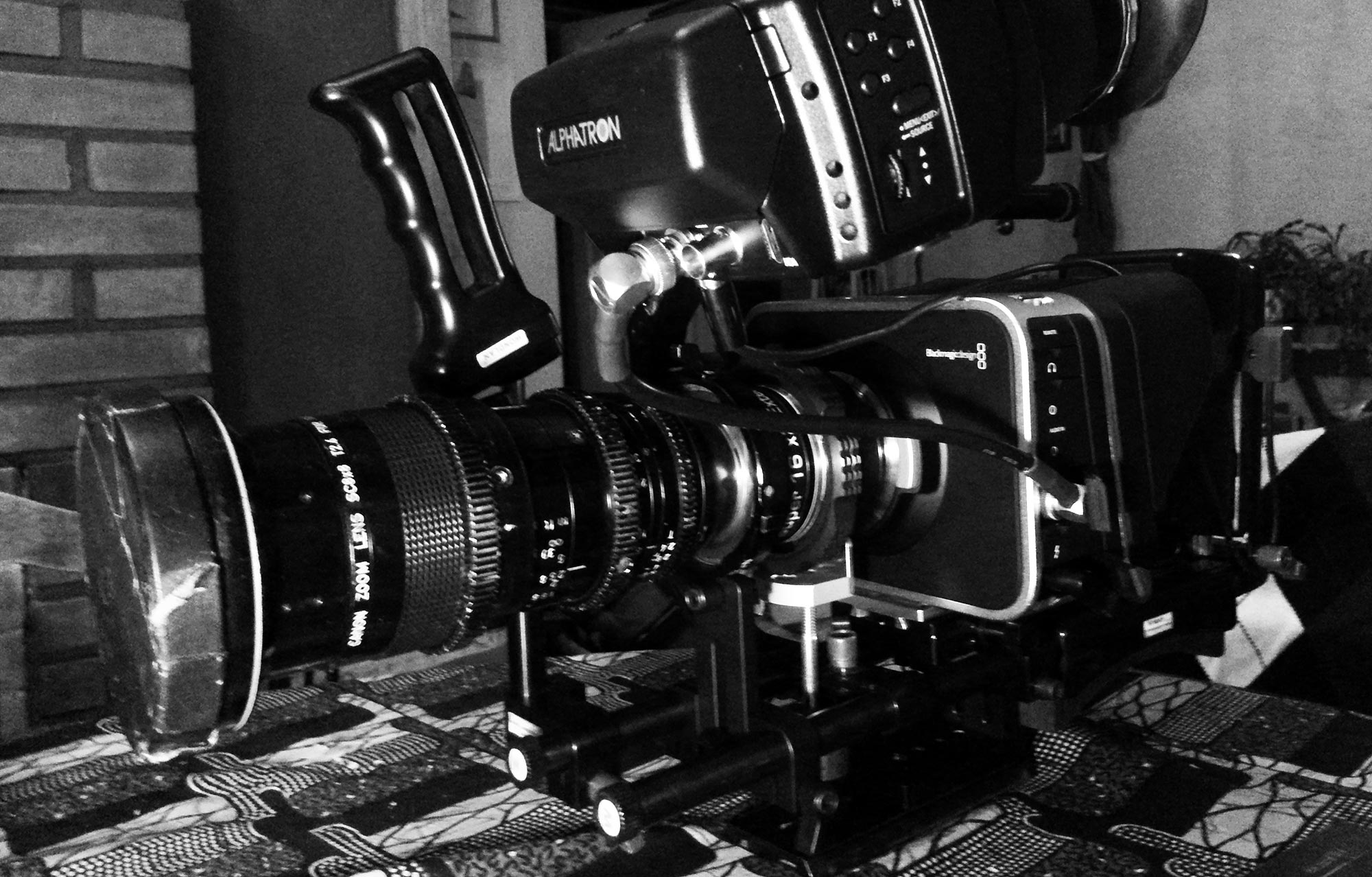
At the moment ( beginning of 2014) there are 4 different versions of the blackmagic cameras:
– Blackmagic cinema camera 2,5K – Canon EF mount ~ 1500€ VAT free
– Blackmagic cinema camera 2,5K – Micro Four Thirds mount ~ 1500€ VAT free
– Blackmagic cinema camera Pocket version – Micro Four Thirds ~ 500€ VAT free
– Blackmagic production camera 4K – Canon EF mount ~ 3000€ VAT free
So what kind of difference does these versions have other than price? It’s the resolution, sensor size and the mount which are more or less the only noticeable difference between all the cameras, excluded the pocket version.
They all shoot RAW or Prores 422 / DnxHD
When I decided on which version to buy I had to think about a couple of things:
For what purpose am I buying this camera for and what kind of lenses am I going to use? I bought it more or less purely for wildlife film making which means that I’m going to use a variety of lenses, all the way from wide to super tele (over 1000mm field of view).
The next thought was that how many different lenses would I need to, let’s say go from 24mm to 1200mm field of view and what would they cost?
Let’s start with the Blackmagic cinema camera 2,5K – Canon EF mount:
This version is 2,5K which means it’s around a 2,39x “crop factor” compared to a full frame stills sensor. This means that a lens which is 24mm has a 24mm field of view on a full frame dslr but on this version of the blackmagic camera it will be around 57mm. So as you see it’s not wide at all anymore. Okay, there are wider lenses for dslr’s than that, let’s say a 9mm lens. How wide would this be on the blackmagic then? -Around 21,5mm field of view. This is already quite wide. but here might already be some barrel distortion problems due the nature of a 9mm lens made for big sensor cameras.
Yes it might work, but I wouldn’t recommend it in most cases. and you still might want to go wider than 21,5mm…
The problem with the Canon EF mount is the flange distance, (Read more about it here) It’s hard to adapt other lenses than stills camera lenses on this one. This mount was designed for stills cameras with a mirror flapping up and down between the sensor and the mount. which is why the distance between the sensor and the lens is so long. The Blackmagic cinema camera doesn’t have a mirror so this space is just an empty pipe, but to natively fit the Canon EF lenses It’s got to be there.
To say it simply, The EF mount is not good enough for most of the cinema and video lenses. due the nature of the mount itself and due the flange distance.
The Blackmagic cinema camera 2,5K – Micro Four Thirds mount Is actually exactly the same camera as the Canon version except that the mount has changed to the “better” MFT mount. Why is it better?
– The flange distance is very short
– This mount is made for mirrorless stillscameras.
– You can attach more or less any lens in the world with a simple non optical adapter. The questions is of course if they will cover the whole sensor area of the blackmagic cinema camera. At least all lenses made for traditional stills will cover it
The bad thing about this mount… or not the mount actually. The original mount on the panasonic and olympus cameras are active mounts. But for some reason Blackmagic cinema camera has an passive MFT mount. This means that if you use a lens which has electronic aperture, stabilization or autofocus, it will NOT work on this camera. Like my panasonic 14-140mm lens which haven’t been attached to a single camera since I bought the blackmagic =/
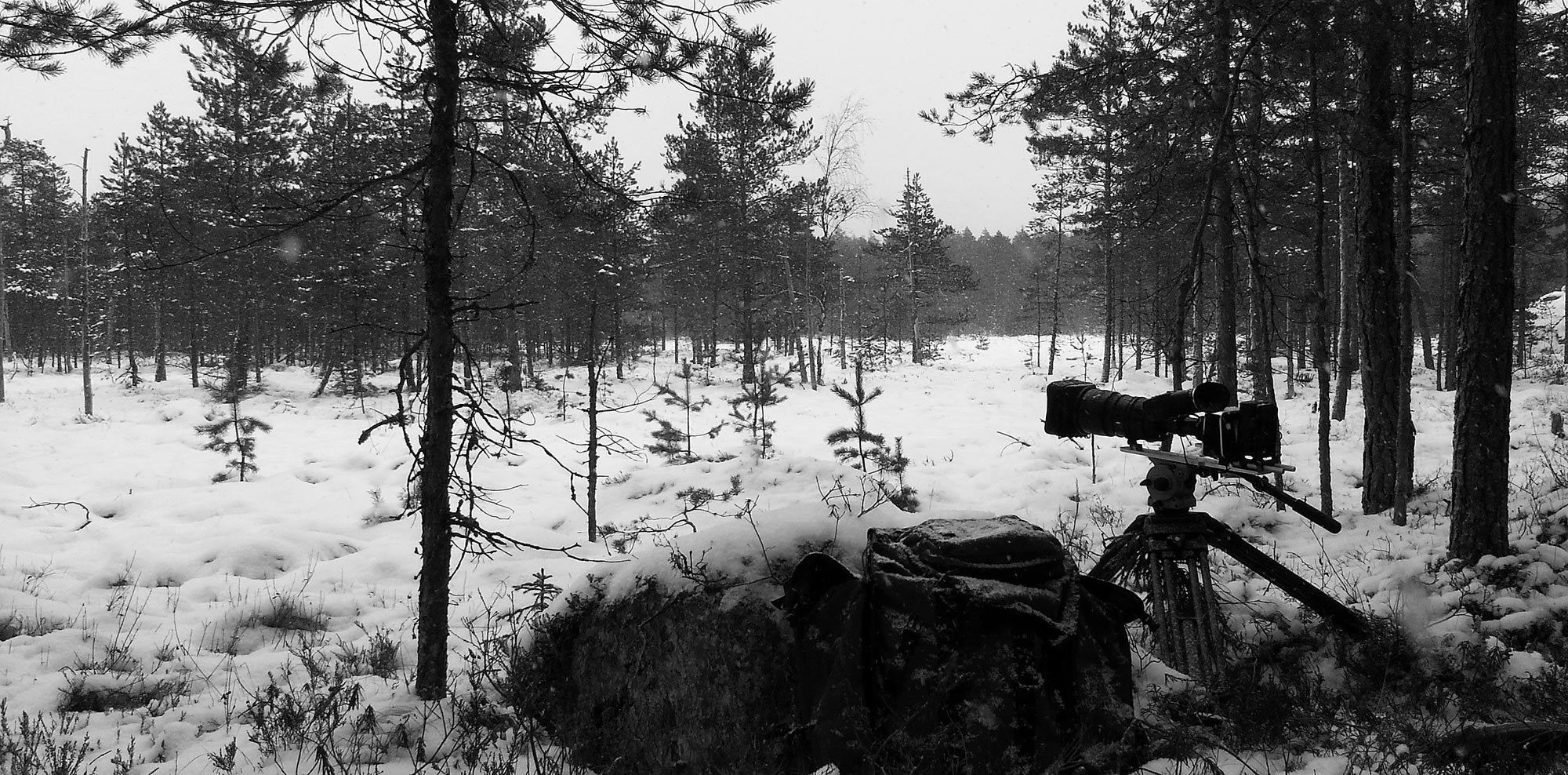
Blackmagic cinema camera Pocket version Is rather different from the other two. It’s about the size of an smartphone. Records only on 95MB/s or faster SD cards. Which have kinda small capacity and are expensive. It does raw as well, however only 1920*1080 pixels.
Things I personally don’t like about this camera are:
– Recording media
– Size
– Battery life
This all can of course be fixed by building a rig with external batteries and recorders.
The Blackmagic production camera 4K – Canon EF mount looks almost identical with the other blackmagic cameras except for the pocket version. But what really differs is the sensor size which is a super 35mm sensor and the resolution which is 4K. At the moment it’s sold Canon EF mount only which is an obstacle for wildlife filming. And another issue is that’s it’s not available in the shops yet (early 2014).
It looks like an very very interesting camera but due the two issues mentioned above it’s not likely that I would recommend this one for wildlife filming… at least not yet. The price of good lenses for this mount is huge compared to what you can get for the MFT version.
If Blackmagic would make a camera which is 4K with an active Sony E mount, then I would be truly interested.
The things I like most on the blackmagic cameras are:
– Simple menues
– The feeling that these cameras are built to do only one thing and they do it rather well
– Image quality
– Recording media, standard 2,5″ SSD:s (Except for the pocket version which uses SD cards)
– Camera performance
– SD-I out
– Professional connections
– Da Vinci resolve software what you get for free when you buy any of these cameras. (except for the pocket version)
– The price

So the question was that which one to buy for wildlife filming. As the market looks like now. I would instantly say the MFT version. The pocket one could be the next choice due the nice cropfactor. I’m sure the 4K is a wonderful camera as well but due the super 35mm sensor it will be very expensive to get any long range zooms or light sensitive tele lenses on this one.
Now I’ve been talking a lot about lenses and that some are more expensive than others. You might now be wondering why it will cost more to get longer ranges on an bigger sensor.
The answer is that the lenses on the market today which has long range and are made for more documentative work are made for smaller sensors. They wont cover a full frame sensor not a super 35mm sensor either, not even the MFT sensor in the 2,5K versions. The easiest way to reach the whole range from 24-1200mm is with two different lenses and one teleconverter:
– 24-105mm
– 100-400mm
– 2x Teleconverter
These are pretty expensive lenses and with the teleconverter you loose two stops of light. To change lenses or even put on the teleconverter takes time and you will most likely miss the shot while doing that. These are big lenses, at least the 100-400mm so you’ll certainly have to build a simple rig to keep the whole set stable.
To change the lens you have to take apart the whole rig and attach it again + balancing it. This isn’t something that takes a couple of seconds and if it’s raining, it’s almost impossible to perform outside.
You can then choose to risk your equipment by doing the change or then just shoot one day with the provided range the lens gives you and the next day with other one.
These lenses are both made for stills photography so they aren’t par-focal and they aren’t that great for manual focusing either due their auto focus engine. Read more about this topic here.

What if I tell you that there’s an other option which will give you:
– More light
– Only one lens which has the whole range
– Parfocal zooming
– Smooth focusing.
This option I’m going to tell you about, ONLY works on the 2,5K MFT & EF versions and the pocket MFT Not the 4K one (at least as far as I’ve understood.)
Buy an secondhand 2/3″ video lens. The zoom has to be at least around 20-30x
If the lens doesn’t have an internal 2x extender, buy even one of those.
Connect the 2x extender on the lens or switch it on if you have that option and mount it with an non optical B4 to MFT or EF adapter. Voila now you have a zoom which should be around 4-5,6 f with a very long zoom range.
As an example: I use a 14,5mm 33x zoom. When mounted on the blackmagic cinema camera MFT version I have an parfocal 50-1650mm f5,6 zoom. The millimeters doesn’t change it’s the field of view that does. I’ve calculated it as compared to a full frame stills camera.
There’s of course some compromises:
– Weight (these lenses are heavy)
– Image quality (they are not as sharp as stills camera lenses, but with a high quality HD 2/3″ lens the image quality reduction should be minimal.
– No stabilization (you need a good tripod)
– No autofocus or what so ever (This is actually just a good thing) =)
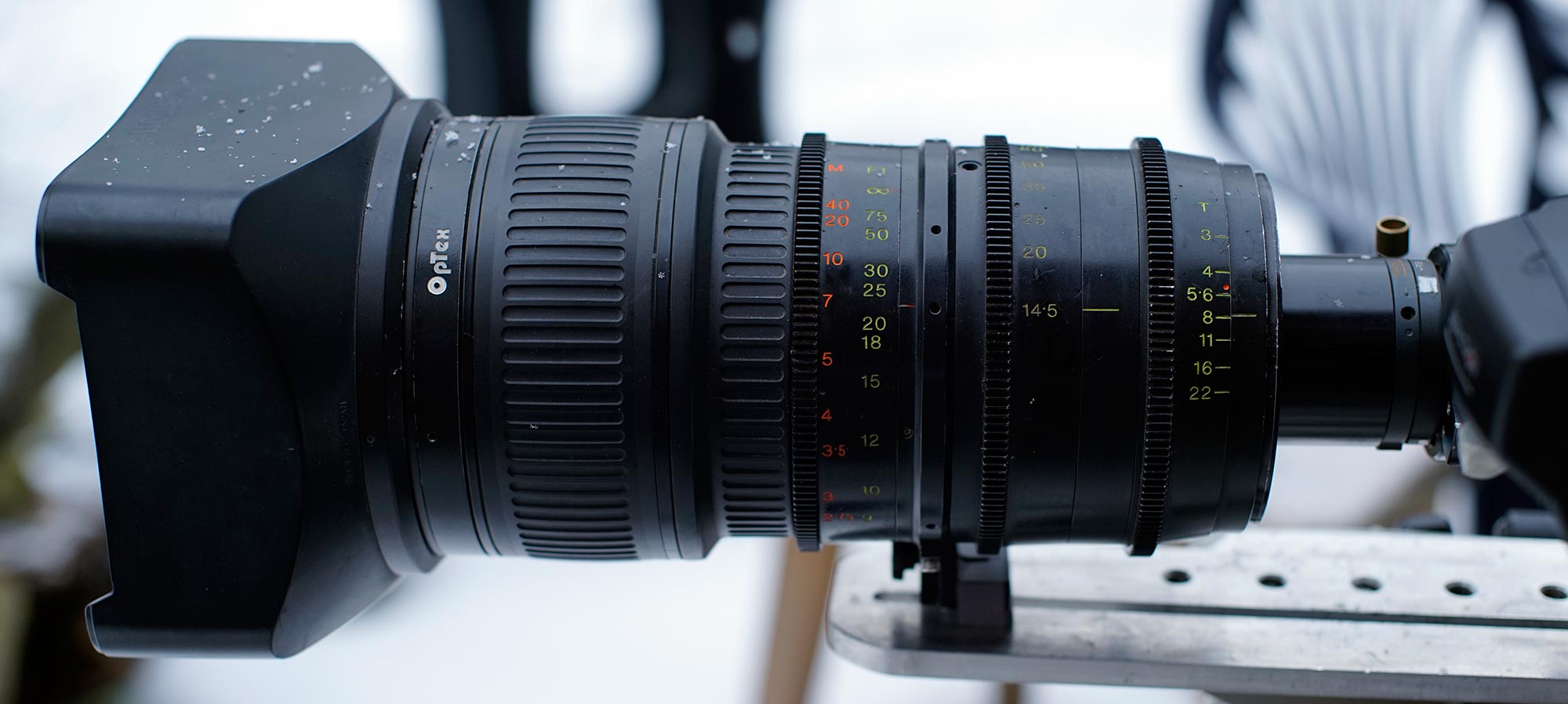
You did maybe notice that I don’t get the 24-1200mm range I’ve been talking about and it’s because the lens starts at 14,5mm. If you find a 8mm 40x zoom then you will get around 24-960mm. ( be aware that these lenses are not cheap) But usually it’s the tele end which is the most important. If you feel that the wide end is more important then try the canon 14×4,3 instead. It equals around 13mm – 180mm on a fullframe dslr. This is already crazy wide.
Would be a very nice documentary film option.
Google around some more about how to connect these lenses to your Blackmagic camera and which of them it’s worth putting money on.
What else do you need than a lens and a tripod to be able to shoot wildlife movies?
I mentioned earlier that the Blackmagic cinema camera has an internal battery. It last’s about 1-1,5h which won’t be enough in most situations somewhere out in the wilderness. Luckily there are several battery solutions. I chose the V-lock solution. It’s an industry standard and almost anyone who shoots professionally uses these batteries. This means that you can rent one from anywhere if you need more than the ones you have.
I use 2 v-lock batteries to power both the camera and the viewfinder and I haven’t ran out of batteries a single time yet. This might change, the days are still so short up here.
The next one on the list would be a viewfinder. The LCD screen on the camera is quite okay but horrible if there’s sunlight. It’s almost like looking directly in a mirror. I use the LCD more or less only for checking out the result later but the rest of the time I use a Alphatron viewfinder. There’s of course cheaper ones on the market but I really think that the viewfinder is one of the most important equipments you can get. It’s possible to use a good viewfinder with other cameras as well. The Alphatron has both SDI and mini HDMI connections. You are able to use it on most cameras, from dslr’s to high end cinema cameras like the RED and Alexa. No point in saving money here.
The next thing what you should definitively get is the recording media. Just check out which SSD’s or SD’s (for the pocket version) are compatible with your camera from the Blackmagic design website.
You might want to record sound as well. The blackmagic cameras features internal microphones which I don’t think are good enough for professional work but can be very useful for sync sound. There’s as well standard jack inputs for audio in all the cameras except for the pocket version. I haven’t tested the preamps well enough to be able to comment about the sound quality. I usually use an external recorder for sound.
So what do you have in the end and what could it cost you?
– A camera that shoots 2,5K raw
– A parfocal video lens that gives you all the range you might need
– B4 to MFT or EF mount adapter
– V-lock batteries
– Viewfinder
– sound recorder
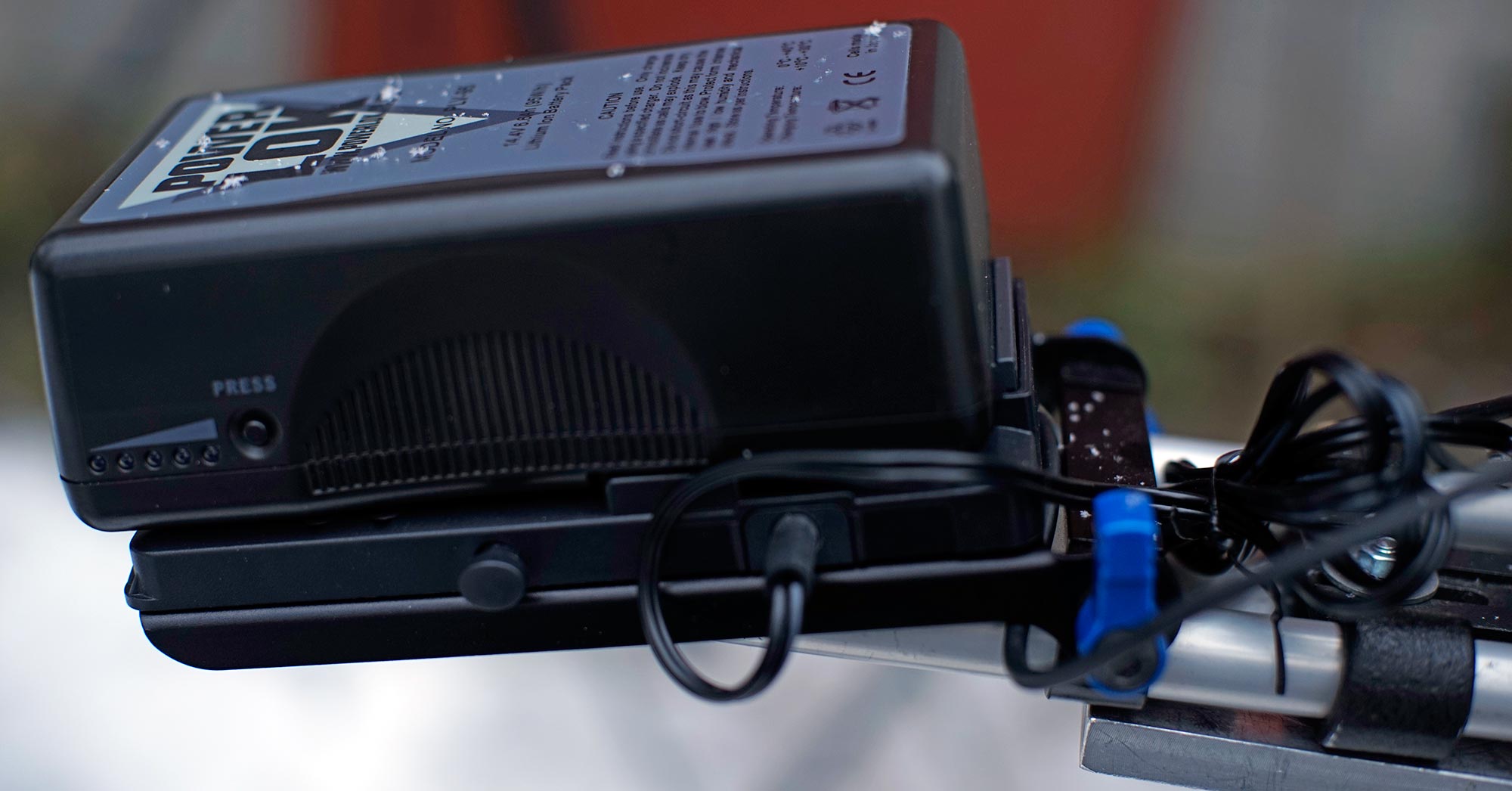
The lens is of course the most expensive one. The price depends on many factors:
– Range
– Light sensitiveness
– Optical quality (SD or HD)
– Internal or external doubler
HD lenses are usually recommended for HD or higher resolution footage. The prices of these compared to SD lenses is about as much as putting on zero more to the price. There are as well some high quality SD lenses which might work well enough for you. Just check out Ebay and lens review forums.
Depending on which lens you choose, you’ll most likely end up somewhere between 5000-30 000euros. This is not a very bad price to pay, considered that the only thing you might need to change when upgrading is the camera itself (which is in this weird case around 1500euros)
I hope this article helps the ones who have been thinking about which camera to buy for wildlife films. Hopefully it even inspires people who just happened to read the article by chance to try out some nature video shooting as well.
Feel free to drop me a comment regarding this article, and if there’s some miss information or lack of detail, feel free to point it out in the comments below.

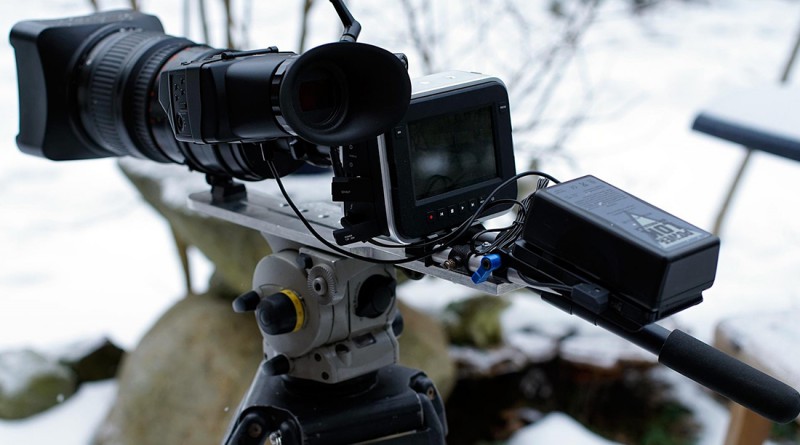





Hi great article. I read it some time ago and recently last year decided to buy a BMMCC based upon my research (encouraged by you). Most of my work is with microscopes both custom designed and off the shelf research grade scope. Got an old broadcast camera but wanted tonnes of flexibility for on the move shooting, relocating all the time. I’m using it to shoot macro and low light performance is great along with the capability to do time_lapse in camera, plus all the other stuff like great dynamic range
Thank you for the kind words!
Good luck with the filming :)